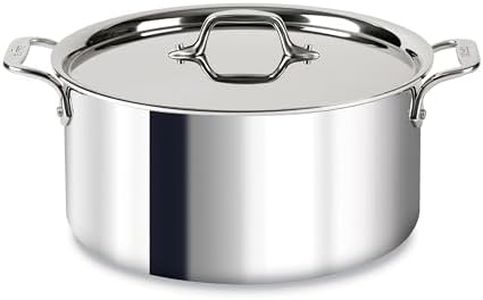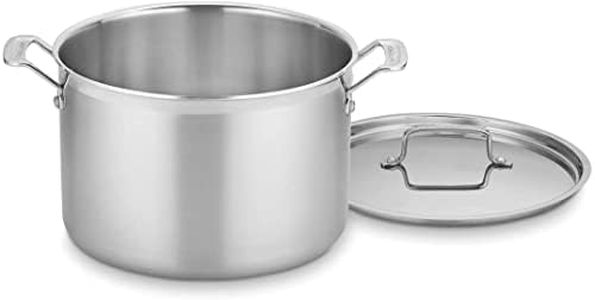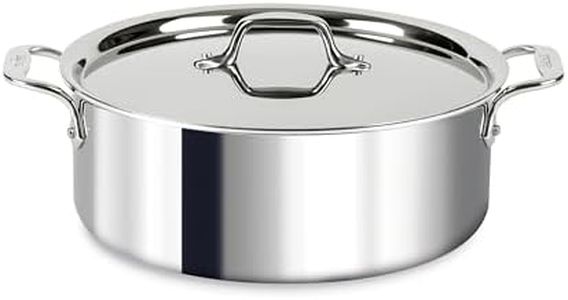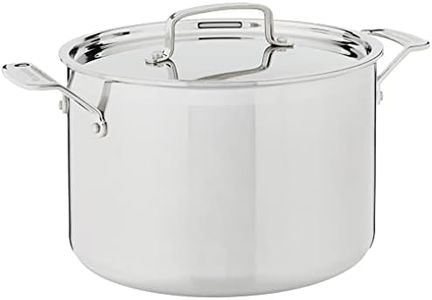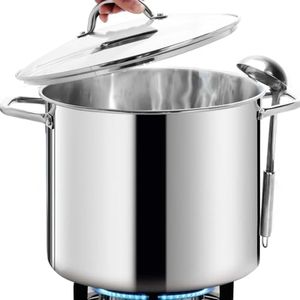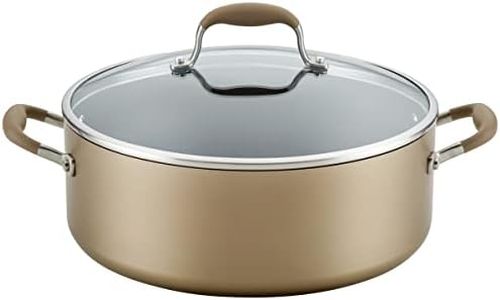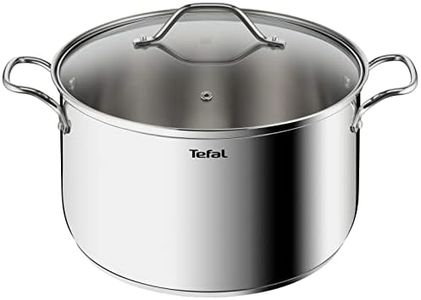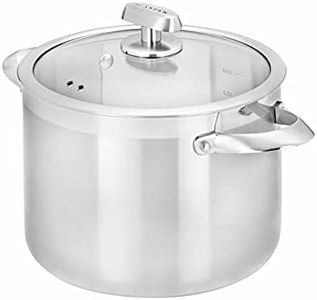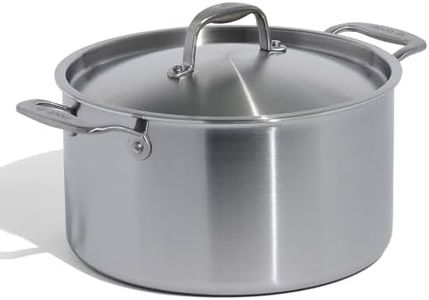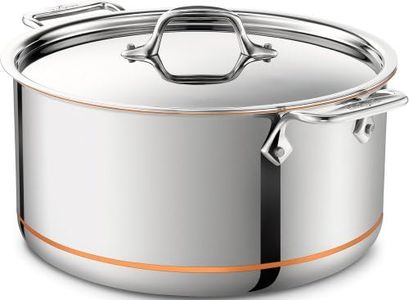We Use CookiesWe use cookies to enhance the security, performance,
functionality and for analytical and promotional activities. By continuing to browse this site you
are agreeing to our privacy policy
10 Best Heavy Bottom Stock Pot
From leading brands and best sellers available on the web.Buying Guide for the Best Heavy Bottom Stock Pot
When choosing a heavy-bottom stock pot, it's important to focus on how the pot will suit your cooking habits, the size of your household, and the kind of dishes you often prepare. Unlike regular pots, heavy-bottom stock pots are designed for consistent heat distribution and are ideal for making soups, stews, and stocks that require slow, even cooking. Before purchasing, consider your stove type, how much food you typically make, and storage space. A well-chosen stock pot will help prevent burning, enhance flavors, and last for many years if cared for properly.MaterialThe material of a heavy-bottom stock pot influences how effectively it conducts and retains heat. Common choices include stainless steel, aluminum (often encased), and copper. Stainless steel is popular for its durability, non-reactivity, and ease of cleaning, but it is best when combined with a core of aluminum or copper for even heating. Aluminum provides great conductivity but can react with acidic foods unless lined. Copper offers superb heat control but often requires special care and is usually paired with stainless steel for durability. Think about your cooking routine: if you tend to simmer soups for hours, a pot with a layered base (aluminum/copper sandwiched between steel) helps avoid hotspots. For general home use, stainless steel with an encapsulated bottom is often a balanced choice.
Bottom ThicknessBottom thickness refers to how thick the base of the stock pot is, which greatly impacts heat retention and distribution. A heavy, thick base ensures that heat spreads evenly and prevents food from burning or sticking. Thickness can range from thin (less than 2mm) to very thick (over 5mm). For stock pots, look for a base at least 3mm thick for even cooking; anything thinner can result in uneven heating, while thicker bases are great for slow simmering and can handle larger quantities. Choose a thickness that corresponds with the kind of cooking you do most—if you often make large batches that need long, gentle simmering, a thicker bottom will serve you best.
CapacityCapacity is simply how much the pot can hold, usually measured in quarts or liters. Stock pots range from smaller sizes (6–8 quarts) for everyday soups, to large capacities (12–20 quarts) for big families or batch cooking. For most home kitchens, an 8 to 12-quart pot is sufficient. Choose the size based on the number of people you cook for, the volume of food you prepare, and how much storage space you have. If you entertain often or like to cook broths or stocks to freeze, go for a larger capacity. For regular use in a small household, a mid-sized pot is more practical and easier to handle.
Lid and Handle DesignA well-fitted lid helps trap moisture and heat, which is crucial for simmering soups and stocks. Look for lids that fit snugly, whether they are glass (to check contents easily) or metal (often more durable). Handles should be sturdy, securely riveted, and comfortable to grip, as a full stock pot can be heavy. Oven-safe handles are a bonus if you plan to finish dishes in the oven. Bring your cooking and cleaning style into account—easy-to-grip and cool-touch handles add safety and convenience, especially when moving a full pot.
Compatibility with Stove TypesSome stock pots work better on certain stoves, especially induction cooktops, which require magnetic materials like stainless steel or enameled steel. All pots work on gas and electric stovetops, but if you have induction, check that the bottom is induction-compatible. Additionally, a flat and wide base ensures full contact with the heating element, improving efficiency. Think about your current and possible future kitchen appliances—make sure your stock pot will work across all of them.
